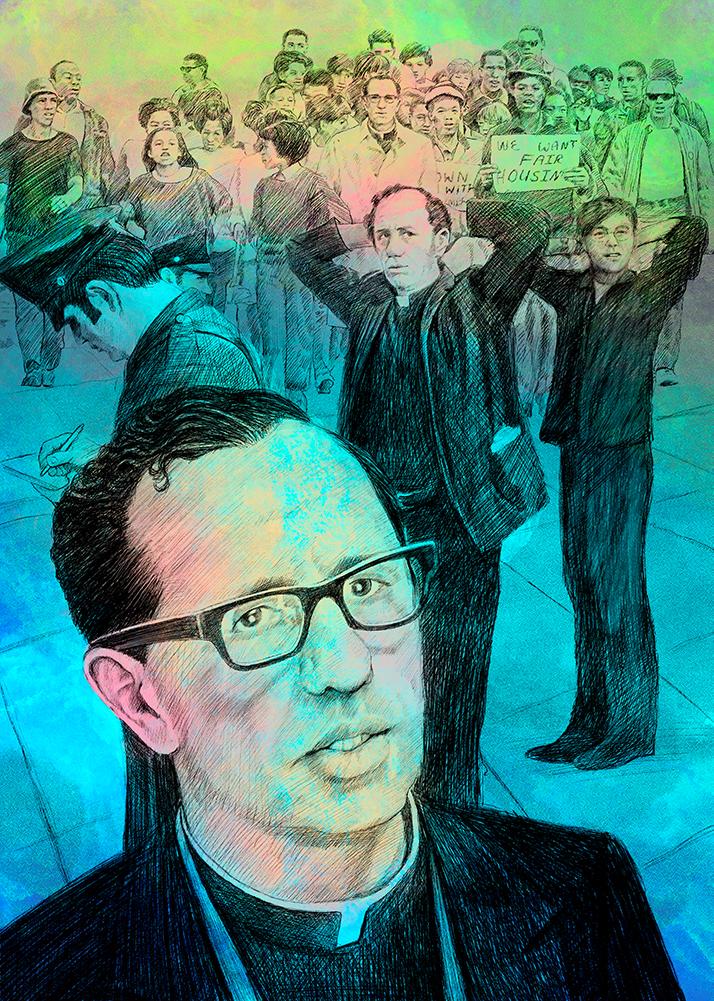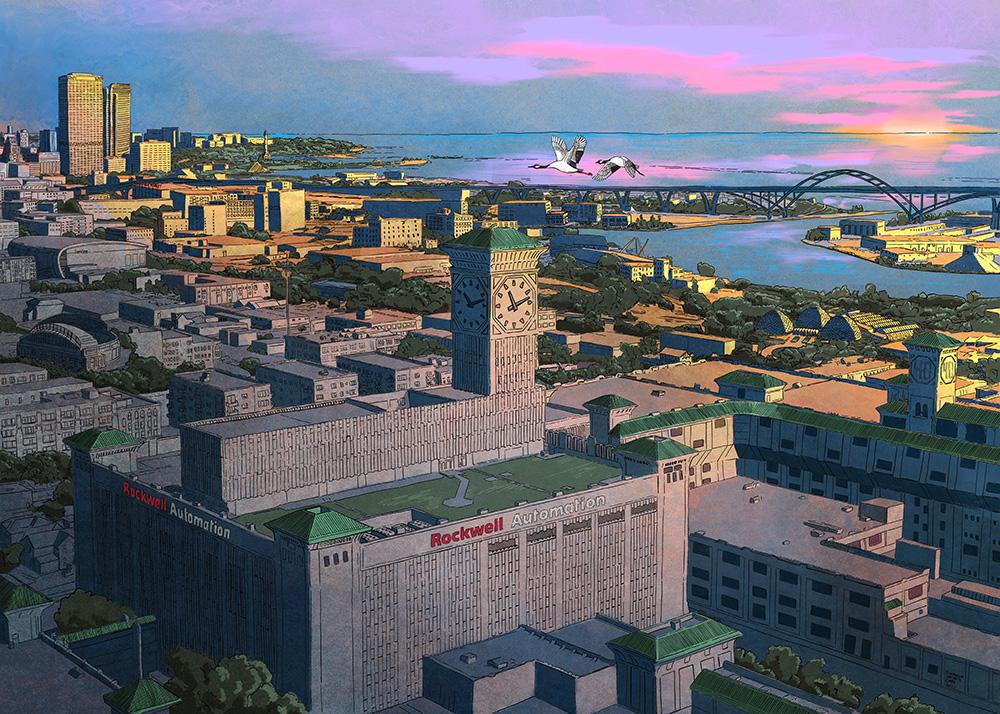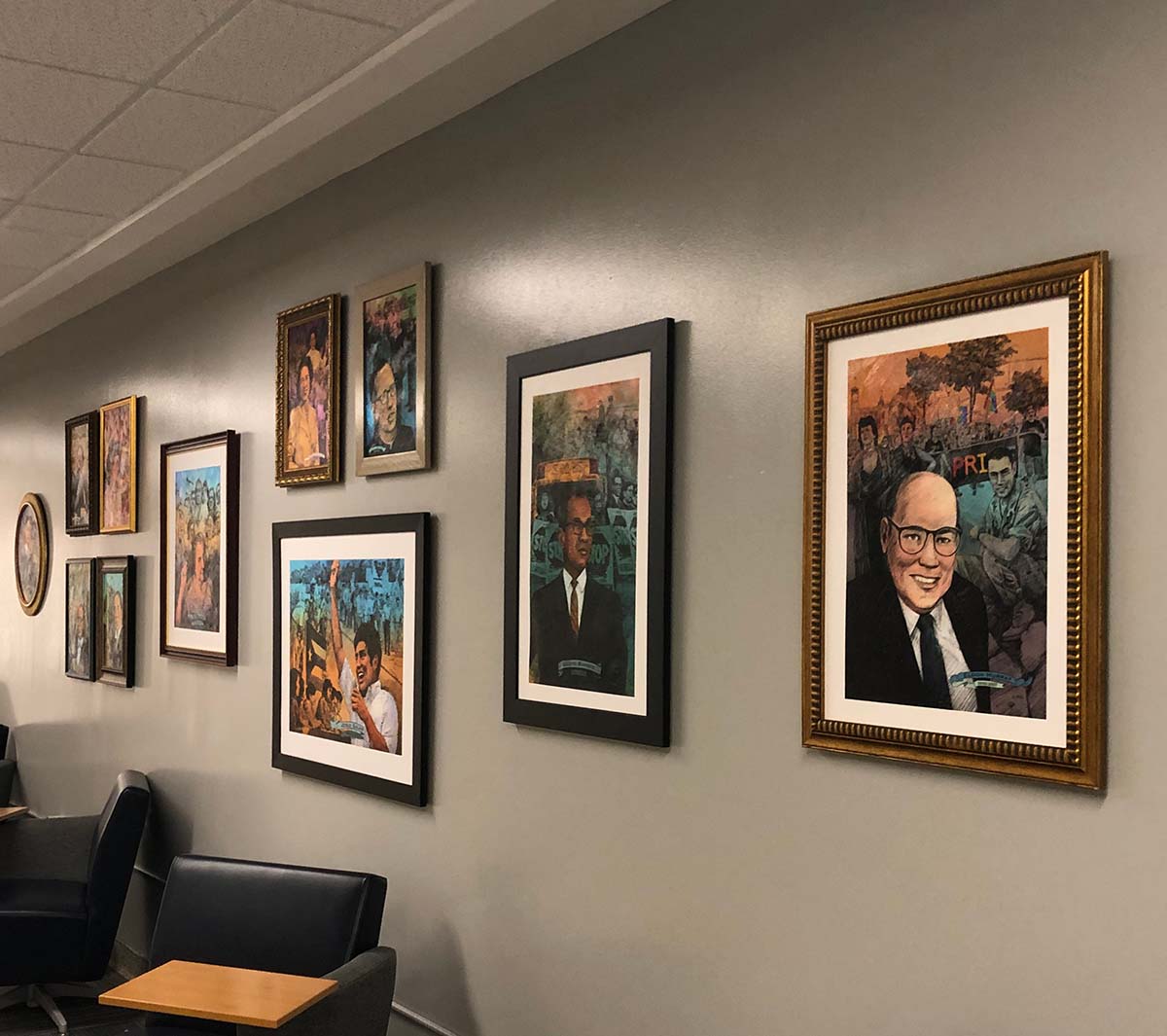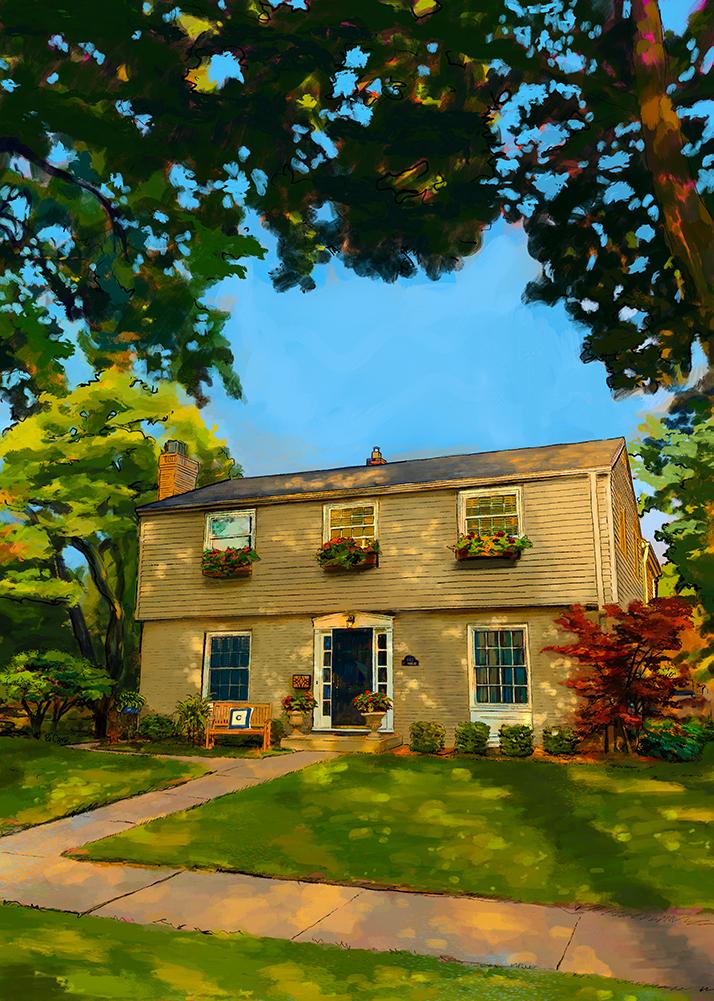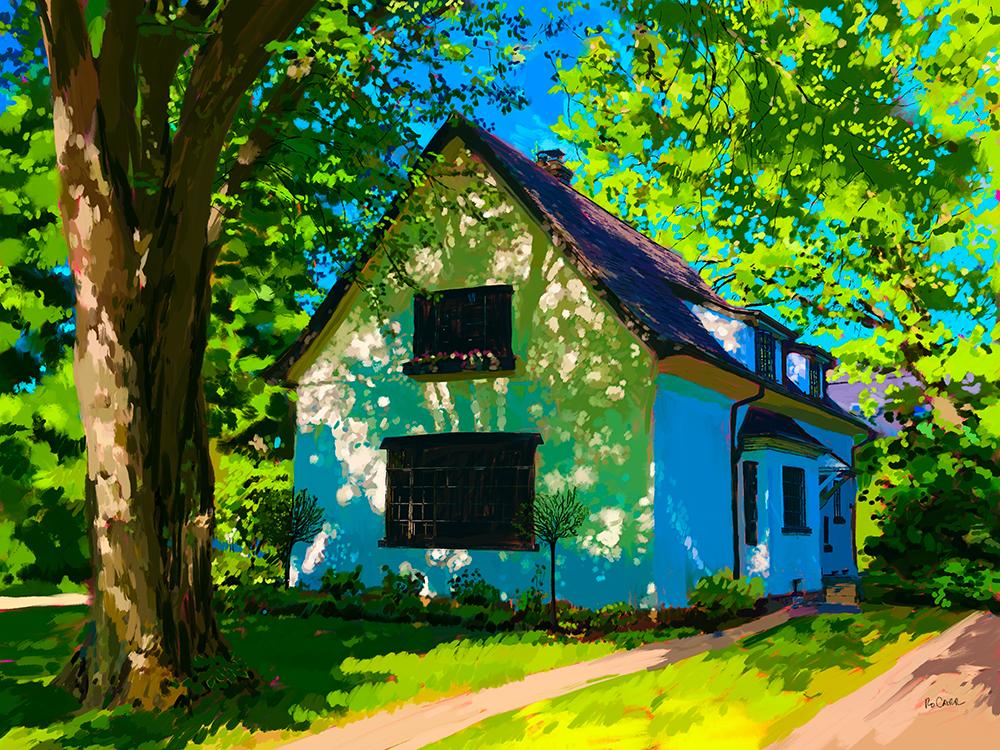Civil Rights Leader, Catholic Priest
This week for the MATC Portrait of Milwaukee project, I have been focusing on Father James Groppi. Fr Groppi was a contemporary of Vel Philips and they worked together to advance the cause of fair housing for Milwaukee's black citizens. For the portrait I focused on showing the famous 200 nights of marching, drawing on a few photos. The far background is a shot of Father Groppi and a group of young people marching across the 16th St Viaduct, the mid-ground image is of Groppi being arrested with another protester, and the foreground is from a photo of Fr Groppi from this era, intent in expression, giving the feel of an interview.
Father James Groppi, 1930-1985
James Groppi was born in the Bay View neighborhood on the south side of Milwaukee, Wisconsin to Italian immigrant parents. James Groppi attended St. Lawrence Seminary (1950–1952) in Mount Calvary, Wisconsin. According to writer Frank Aukofer, “It was during his seminary years that Father Groppi began developing an empathy with the Black poor. He worked summers at a youth center in Milwaukee’s inner core. It was there that he saw the social suffering and ostracism that Negroes lived with every day”. Groppi became active in the cause of civil rights for Africans-Americans, participating in the 1963 March on Washington and the Selma to Montgomery marches in 1965 on behalf of the Voting Rights Act. In his capacity as NAACP advisor in Milwaukee, Groppi mounted a lengthy demonstration against the city of Milwaukee on behalf of fair housing. Along with Vel Philips, he led marches protesting for fair housing for 200 consecutive nights across the 16th Street Viaduct, to be received every night by angry white citizens on the other side of the bridge throwing rocks and bottles at them. The viaduct spanned the half-mile wide Menomonee Valley, and this was considered to be a symbolic divide between the black north side and the white south side. Throughout this period, Fr Groppi received both physical and moral support from human rights activists like Dick Gregory and Martin Luther King, Jr. Though Groppi was denigrated and arrested on numerous occasions for standing firm in his beliefs, he was instrumental in dramatizing the segregated housing situation in Milwaukee. These efforts led to enactment of Vel Philips' open-housing law being passed in the city. Father Groppi continued fighting for human rights, marching for the rights of those on welfare, Native American rights, and to end the war in Vietnam. Father Groppi later left the priesthood to marry Margaret Rozga, who was to become an English professor at UW-Waukesha. The couple had a family of three, and Father Groppi worked as a Milwaukee bus driver. After his passing in 1985, the city renamed the 16th Street bridge in his honor, calling it the "James E. Groppi Unity Bridge".
For more information:
